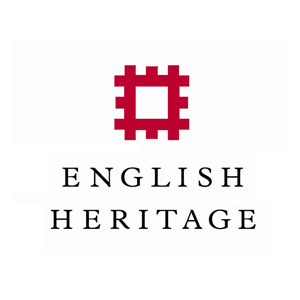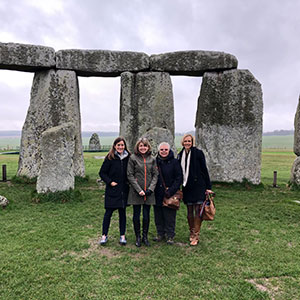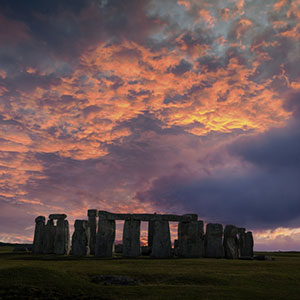The long-awaited new Visitor Centre at Stonehenge opened in December 2013. The VC was the lynchpin of a wider project that saw significant improvements in the conservation, interpretation and visitor experience at this truly iconic site which is the jewel in the English Heritage crown. Visitor numbers grew sharply following the relaunch and 2017/18 was a record year at over 1.56m visitors. The operational challenges posed by unprecedented levels of demand, potential competition from planned new facilities in the WHS landscape as well as the opportunities and challenges presented by the confirmation of the A303 tunnelling project meant that the five-year anniversary of the Visitor Centre was the right time to undertake a strategic review. Britton McGrath Associates were commissioned to develop a 10-year masterplan for this iconic and strategically significant site. The masterplan was developed over a six-month period and included extensive consultation, a trading review, detailed capacity modelling, a Transport Plan and an options analysis of three potential strategic routes. The resulting three-phase investment plan will protect existing levels of visitor admissions, drive further growth and ensure competitive advantage.
The Full Story
The long-awaited new Visitor Centre at Stonehenge opened in December 2013. The VC was the lynchpin of a wider project that saw significant improvements in the conservation, interpretation and visitor experience at this truly iconic site which is the jewel in the English Heritage crown. Visitor numbers grew sharply following the relaunch and 2017/18 was a record year at over 1.56m visitors. The operational challenges posed by unprecedented levels of demand, potential competition from planned new facilities in the WHS landscape as well as the opportunities and challenges presented by the confirmation of the A303 tunnelling project meant that the five-year anniversary of the Visitor Centre was the right time to undertake a strategic review. Britton McGrath Associates were commissioned to develop a 10-year masterplan for this iconic and strategically significant site. The masterplan was developed over a six-month period and included extensive consultation, a trading review, detailed capacity modelling, a Transport Plan and an options analysis of three potential strategic routes. The resulting three-phase investment plan will protect existing levels of visitor admissions, drive further growth and ensure competitive advantage.
The process started with an extensive consultation exercise among a wide range of internal management representatives as well as external stakeholders. In an organisation such as EH which operates a matrix management structure, it was particularly important to get the perspective of the on-the-ground team who are dealing with the operational challenges of a high volume site on a day-to-day basis, alongside that of the functional specialists for whom Stonehenge is just one, albeit important site in the national or regional portfolio of sites for which they are responsible. Within the EH portfolio, Stonehenge is distinct, not only because of its level of admissions but also because of its dependency on groups and the overseas market, something that necessitates a somewhat different strategy from that which is appropriate for the rest of the sites in the portfolio. The internal consultation was complemented with a full-day workshop among over 50 English Heritage representatives from across all disciplines – this was instrumental in gaining buy-in from all both to the process being undertaken but also to ensuring organisation-wide understanding of the issues facing the site.
The external consultation was important because, although the Master Plan was intended as an internal document helping to inform the investment strategy for the site and for EH over the next 10+ years, any plans for Stonehenge need to be seen within the context of the wider World Heritage Site and its Management Plan. Specifically, a key external factor that presents both opportunities as well as challenges to the visitor operation at Stonehenge, is the £1.6bn scheme to tunnel the stretch of the A303 that runs to the south of the monument. The implications of this for Stonehenge as well as the other stakeholders in the World Heritage Site was a key part of the planning for the Master Plan.
As part of the research and information gathering phase of any project, a detailed trading review is essential in helping us fully understand a client’s or site’s business, giving us a through understanding of the key dynamics and trends and the reasons behind them. Without exception we’ve found that our clients find the analysis illuminating – the management team are more often than not fully focused on performance versus budget or prior year and don’t have the opportunity to consider the bigger or longer-term picture. In the case of Stonehenge, the trading review was particularly important in identifying patterns at a daily and hourly demand level as this fed into the capacity analysis that came later and set the parameters for the strategic options.
A key area of value-added benefit that we are able to bring is a fresh-eyes perspective and an industry-wide context when reviewing the visitor experience. English Heritage sets itself very high standards and invests heavily in delivering a high-quality visitor experience, but it is all too easy to become accepting of things that are below standard – because “that’s the way it is” or has always been. The visitor cannot, nor in our view should not, be expected to be aware of organisational or other reasons for a sub-optimal visitor experience – no matter how valid they might be! We bring a measure of objectivity to assessing the visitor experience using a variety of measures – and open up a constructive debate about how the issues that have been sitting in the ‘too difficult’ basket for longer than most people can remember, can finally be addressed. In the case of Stonehenge, the heart of any visit is the stones experience itself which whilst good, was not world-class in the way that English Heritage wished it to be or that befits such an internationally significant heritage monument. The Master Plan puts down clear markers as to what the experience should be and investment plans as to how to achieve world-class status – for every visitor, every visit.
Capacity is a particular consideration for Stonehenge as, whilst it is an outdoor site and so, theoretically has, if not unlimited, then certainly a very high potential capacity, the ability to develop the visitor facilities to service an unlimited capacity is constrained through its sensitive location within a World Heritage Site and the planning restrictions that come with this. In addition, there is the heritage protection factor, i.e. ensuring that the levels of visitation do not cause damage to the monument or the sensitive landscape surrounding it – this could theoretically be overcome through interventions such as more paved pathways, but this may not be possible or desirable from a planning or aesthetic point of view.
When looking at the potential for Stonehenge therefore and developing a Master Plan that seeks to achieve the optimal balance between the income that visitors bring and the protection of the heritage asset, assessing the optimum capacity is key to any future plans. The aim is to find the ‘sweet spot’ i.e. the level of admissions which balances visitor demand and behaviour with site capacity.
In order to do this, we developed a model which takes into account variable factors including total admissions, the split of individuals and groups, transport modes, party sizes and dwell times and highlights key pinch-points where there are physical constraints such as fire regulations or the numbers of seats available and experience delivery standards such as maximum queue times, comfort factors etc. The model provided a powerful tool for drilling down into key areas of the experience.
Visitor numbers to Stonehenge had grown significantly since the completion of the new Visitor Centre in December 2013 but as we know, visitor attractions typically experience a ‘hockey stick’ shaped admissions curve whereby visitor numbers peak around year 3 after launch and then decline to reach a ‘steady state’ plateau. In considering potential growth scenarios for Stonehenge, the ability of the site to accommodate greater numbers of visitors is clearly important but any growth assumptions rely on there being either: additional market demand that is currently being untapped – attracting new visitors or giving existing visitors a reason to visit more frequently or; retaining share of a market that is growing.
We take a composite approach to assessing market potential using a variety of techniques including: analysis of the existing market penetration levels; a detailed review of the size and profile of the available resident market; future forecasting of international and domestic staying markets and external factors such as competitive developments, changes to public transport etc.
The outcome of this wide-reaching analysis was the identification of three strategic routes which were assessed on a qualitative and quantitative basis. More detailed financial modelling was then undertaken for the preferred route and an investment appraisal developed for the recommended development scenario. Ultimately the Master Plan developed for Stonehenge has been developed to protect the existing levels of admission, drive further growth in key markets and ensure future competitive advantage.






